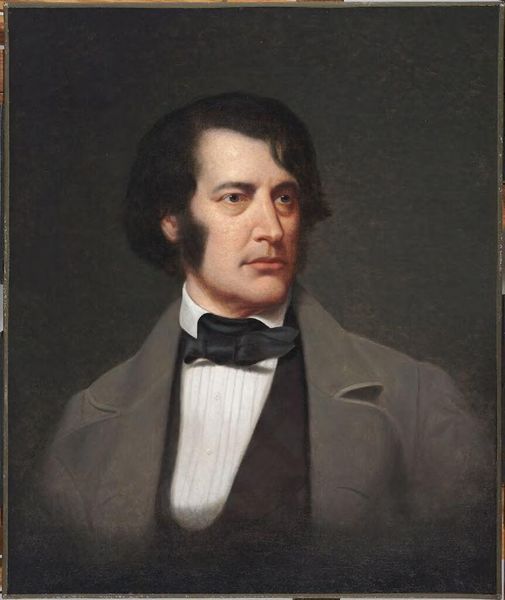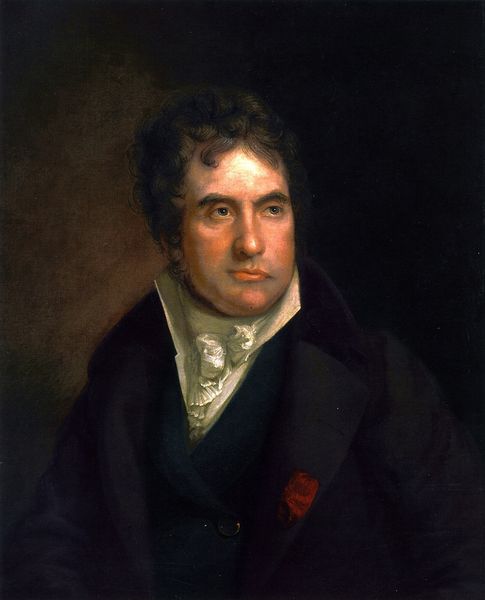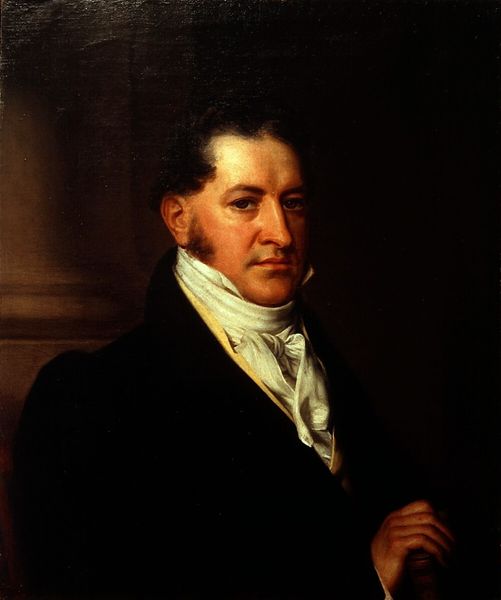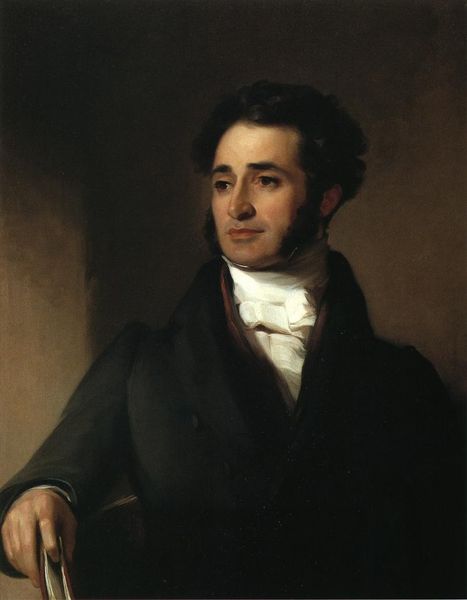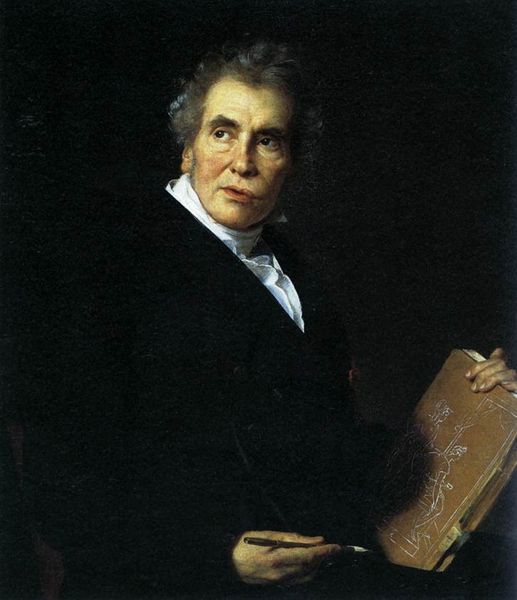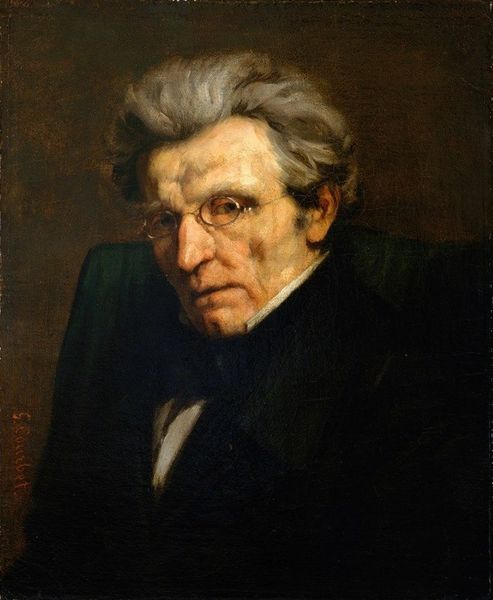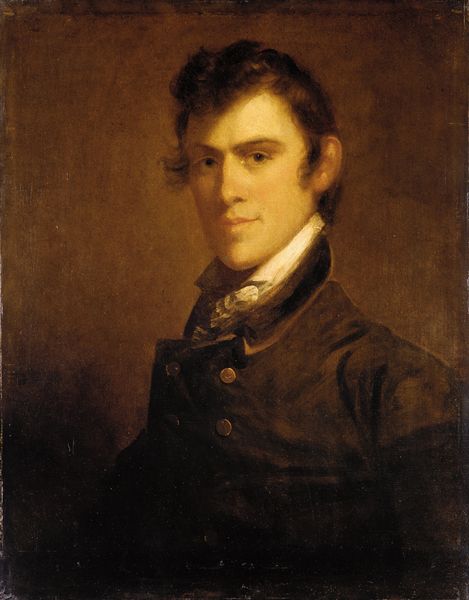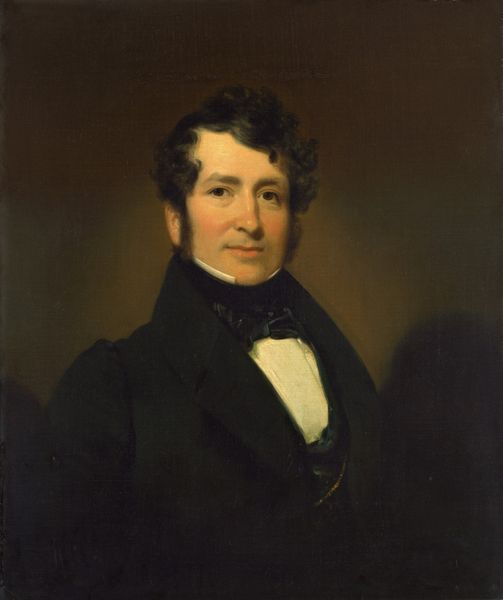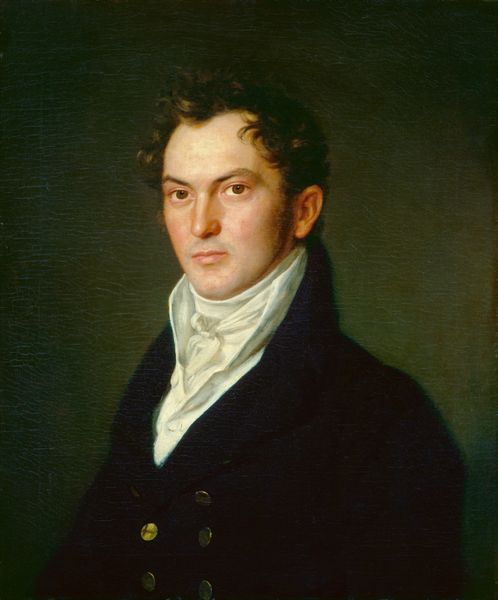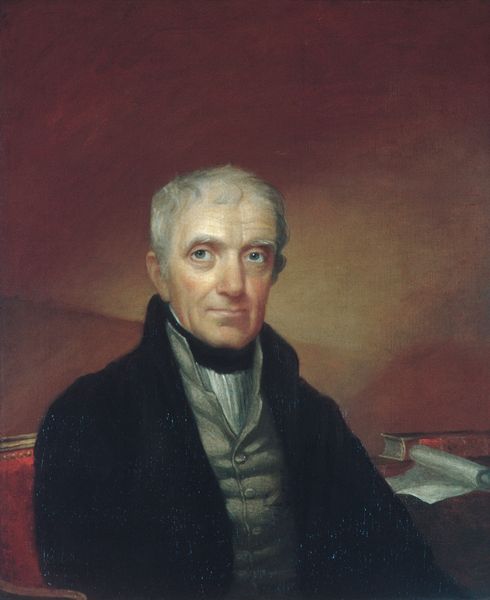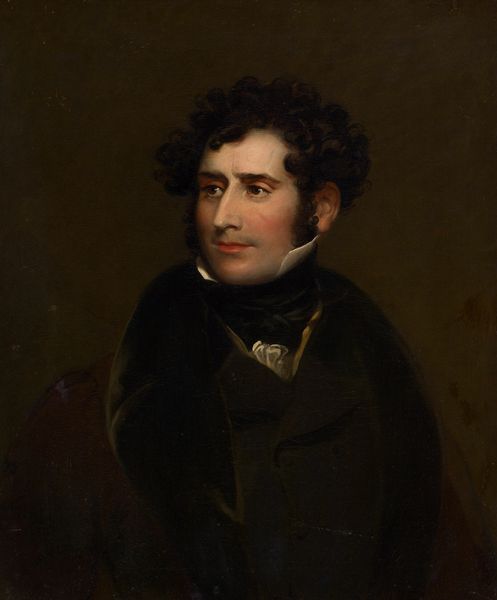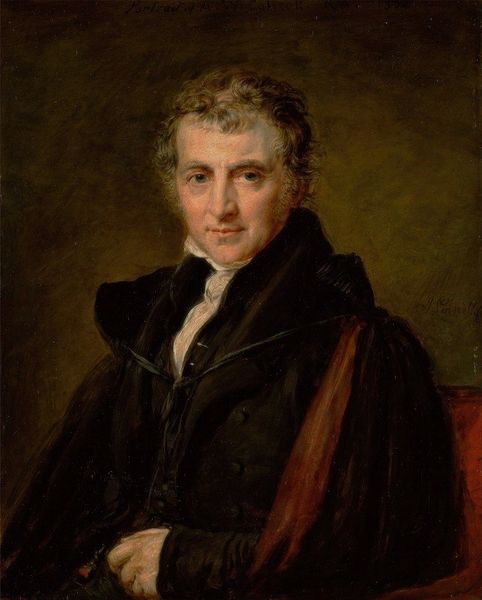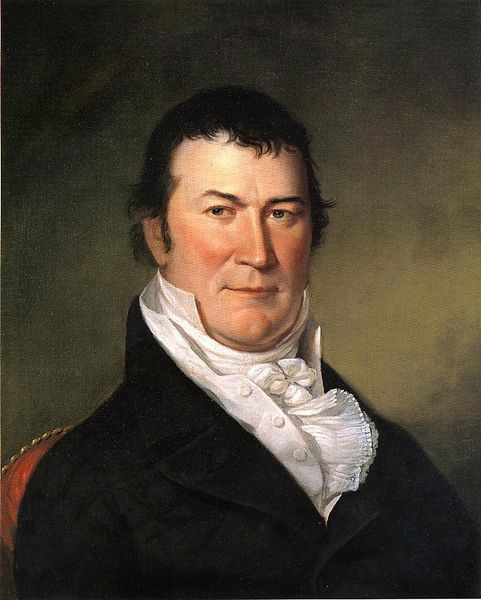
oil-paint
#
portrait
#
low key portrait
#
portrait image
#
portrait
#
oil-paint
#
portrait subject
#
portrait reference
#
portrait head and shoulder
#
romanticism
#
history-painting
#
facial portrait
#
academic-art
#
fine art portrait
#
celebrity portrait
#
digital portrait
Copyright: Public domain
Curator: Rembrandt Peale completed this oil on canvas portrait of John C. Calhoun in 1834. Looking at it, what strikes you most? Editor: The somber mood. The muted colors and heavy shadows give him a very serious and almost brooding air. Curator: It’s fascinating to consider how that perceived mood plays into the larger narrative surrounding Calhoun. He was a prominent figure in American politics, deeply connected to the defense of slavery, and served as Vice President under both John Quincy Adams and Andrew Jackson. A South Carolina senator too, his advocacy was, to say the least, intensely controversial and deeply rooted in white supremacist ideology. Editor: And seeing this image now, especially understanding the weight of his politics, one can't help but read into that shadowed face and speculate about what demons might be reflected there. Portraits are so often exercises in constructing a desired image, but history casts its shadow here. I mean, this portrait hangs today in the National Portrait Gallery…an institution with an explicitly public role to interpret history. Curator: Absolutely. Knowing the historical context shifts the way we perceive even the artist's technique. Peale comes from a renowned family of American painters, and was working within established traditions of portraiture, striving to capture both likeness and a sense of character. Now, however, we see his skill implicated, used to craft an image of someone whose actions demand far more complex ethical consideration. I look at the crispness of the lines, especially around his jaw and gaze and wonder who Peale's audience was meant to be, and for what reasons. Editor: I think that studying this painting compels us to analyze the function of portraits within institutional memory. It forces questions. What choices went into canonizing this face as worthy of preservation, and what stories might these historical icons obscure? Curator: Ultimately, art serves as an index of our shifting cultural values. And seeing this image prompts challenging reflections on our past. Editor: A vital, even urgent dialogue, one which insists we consider who holds power, and who art enshrines, and for what possible motivations.
Comments
No comments
Be the first to comment and join the conversation on the ultimate creative platform.
